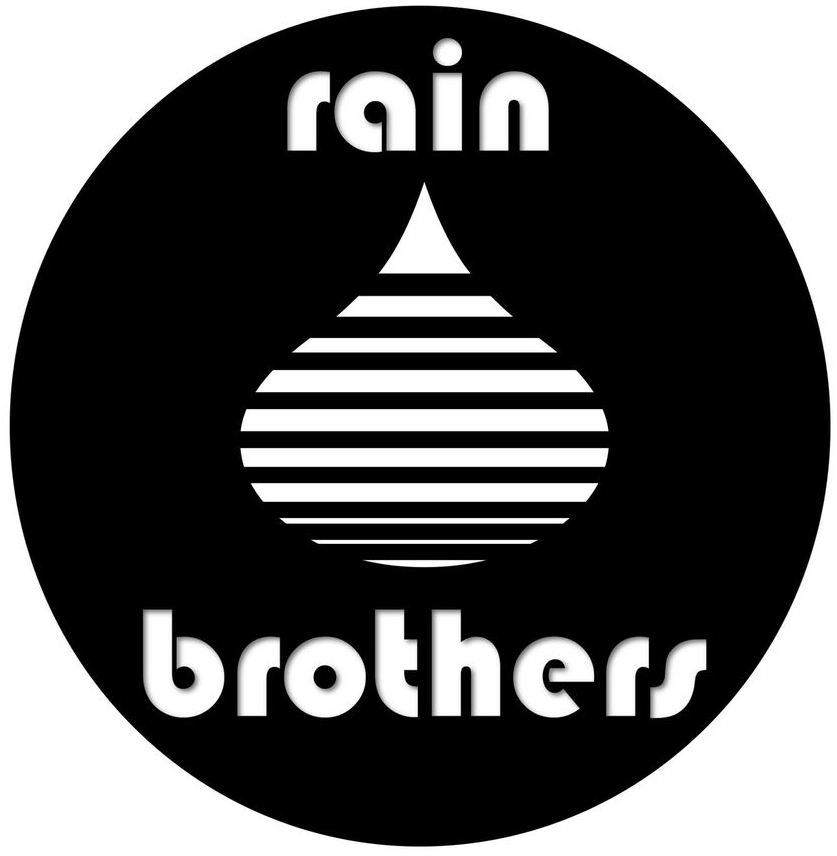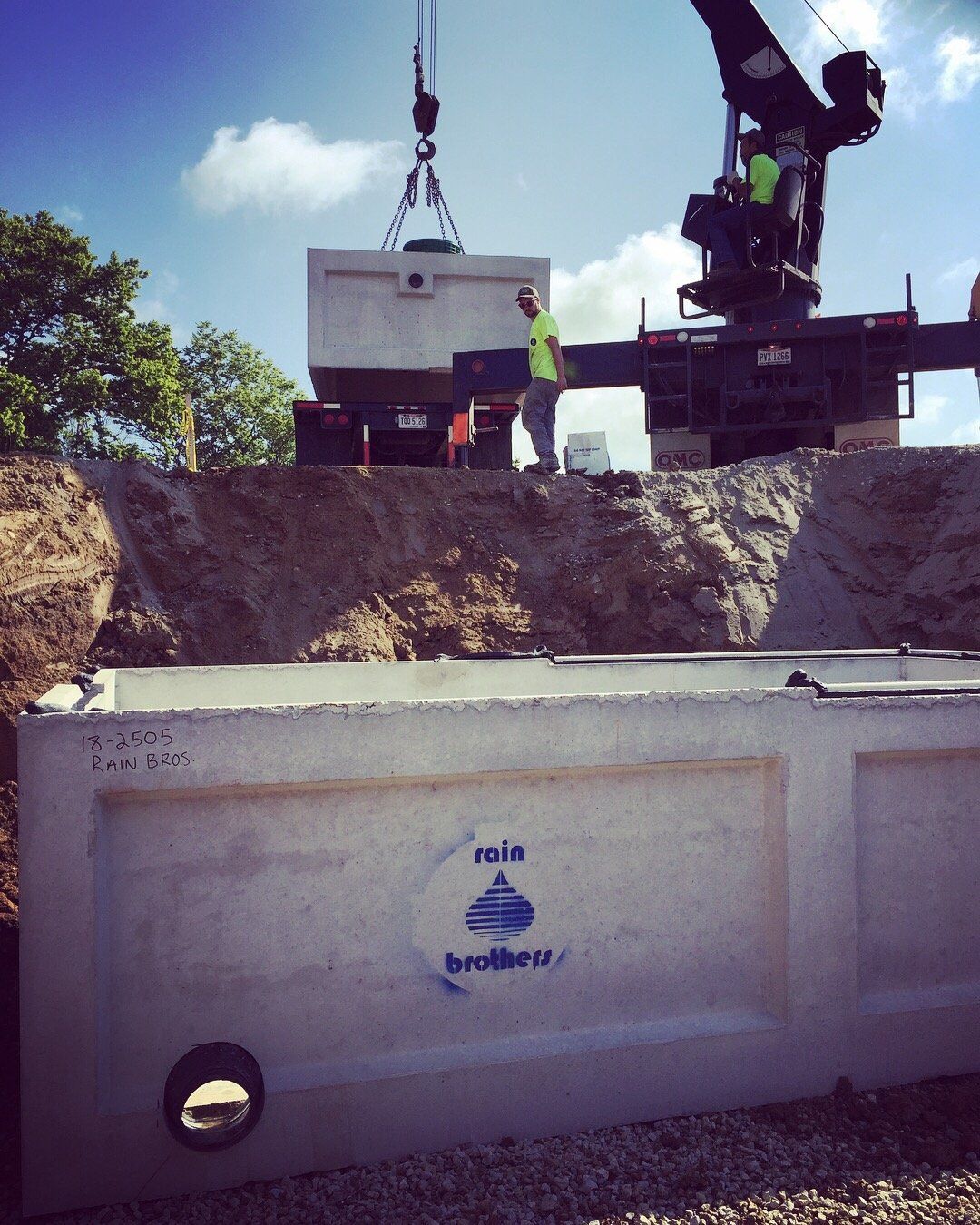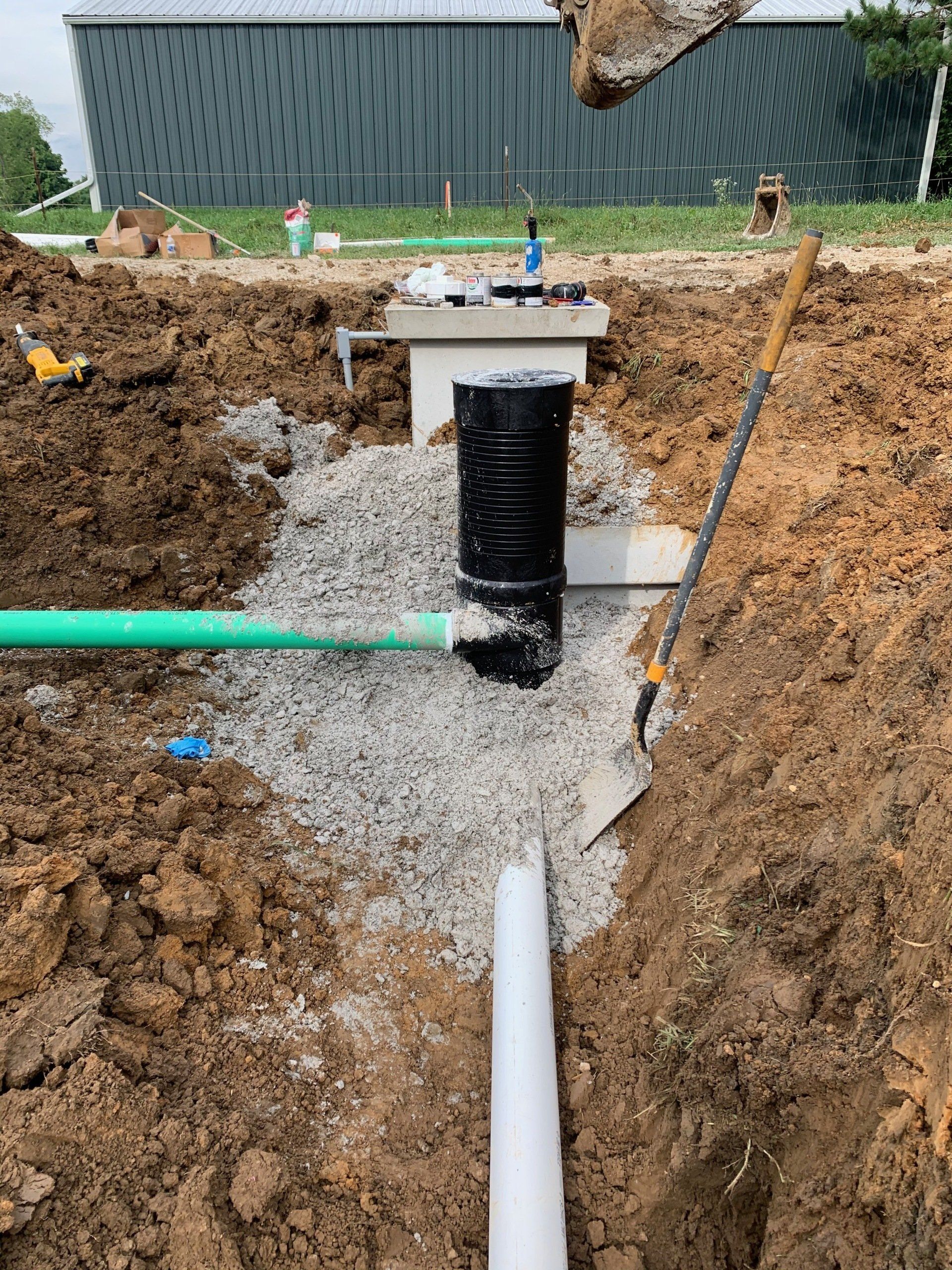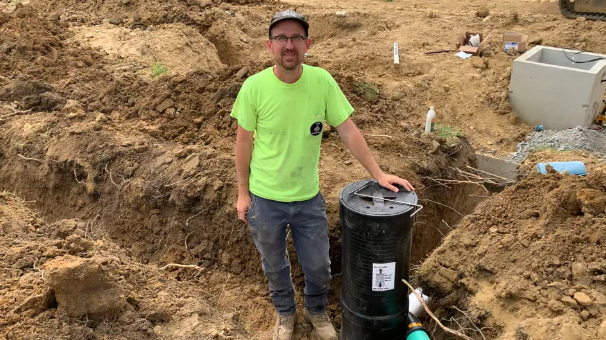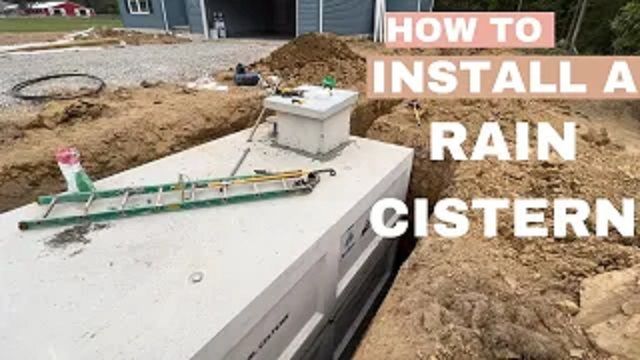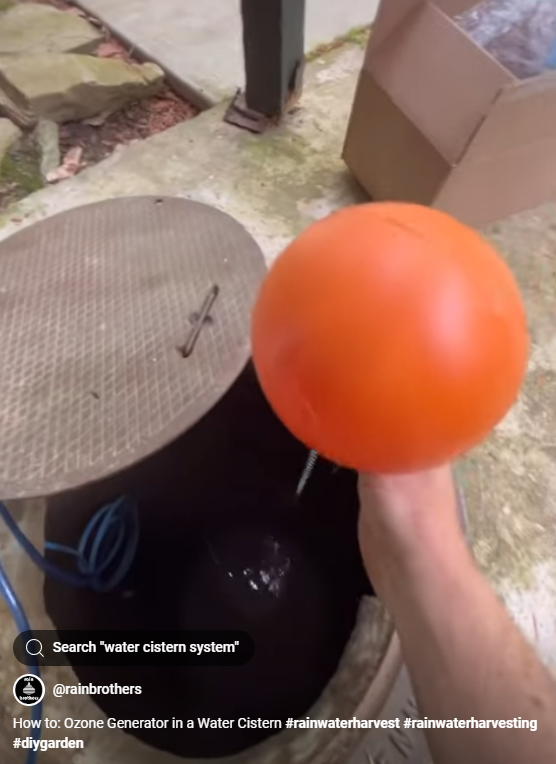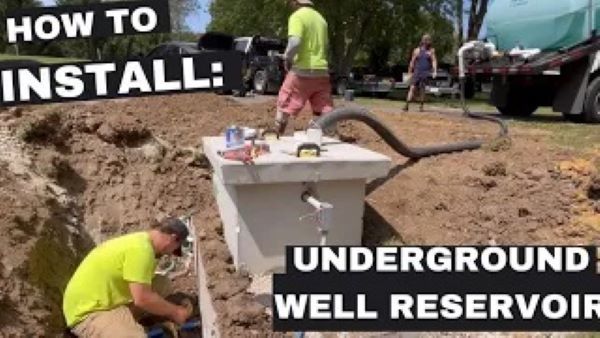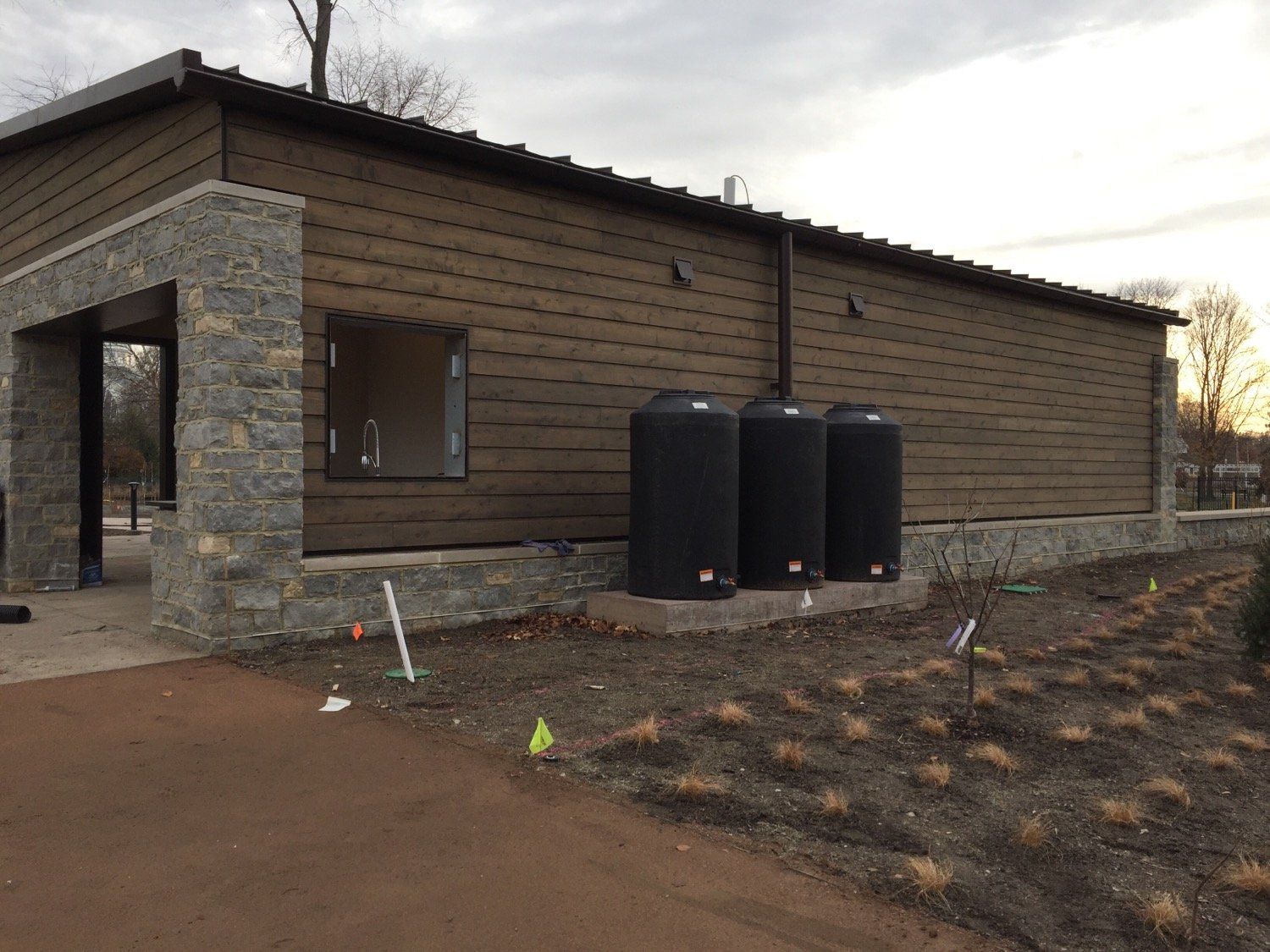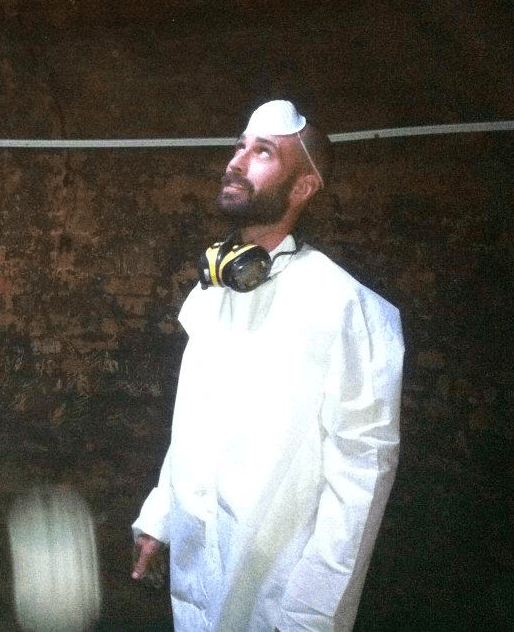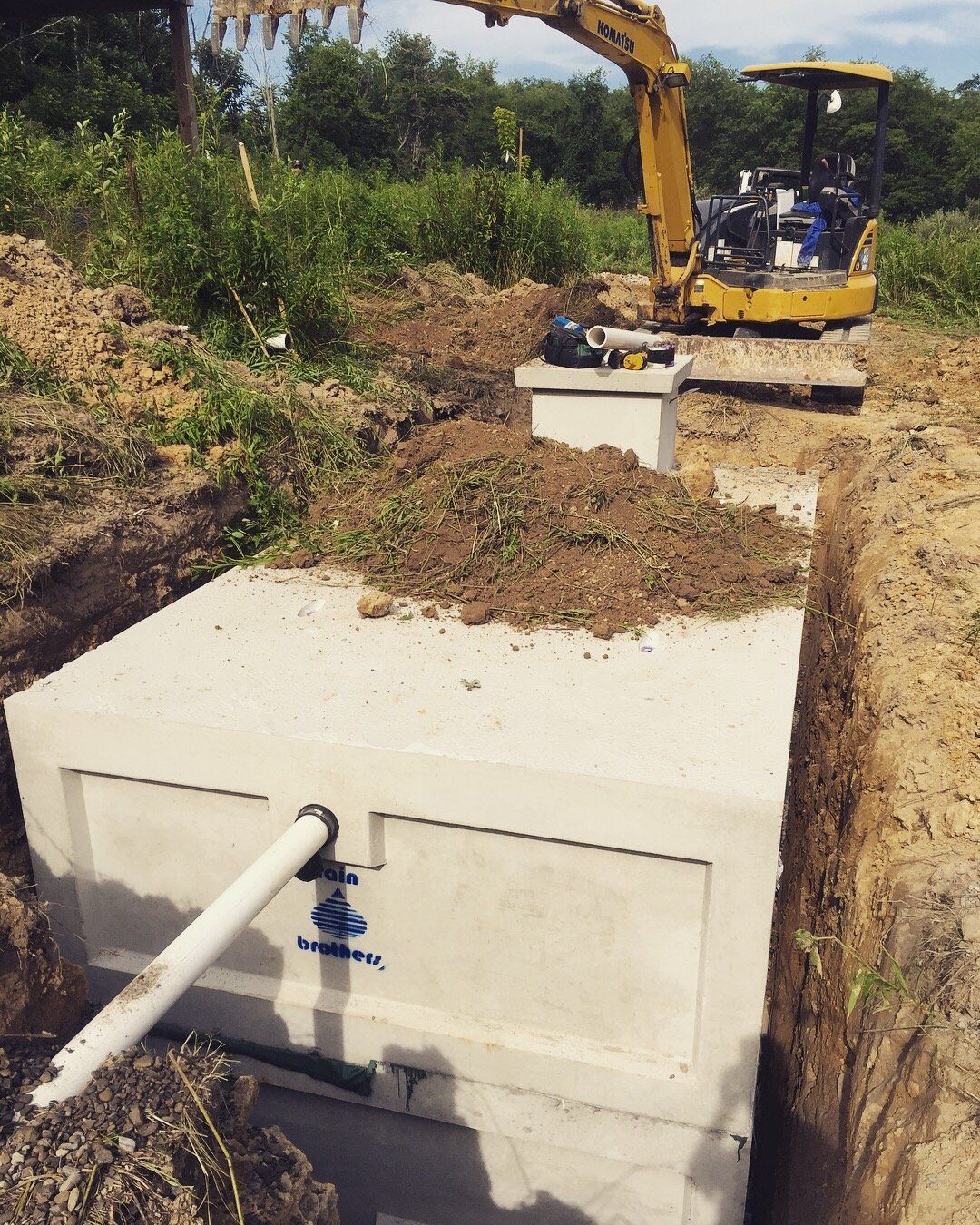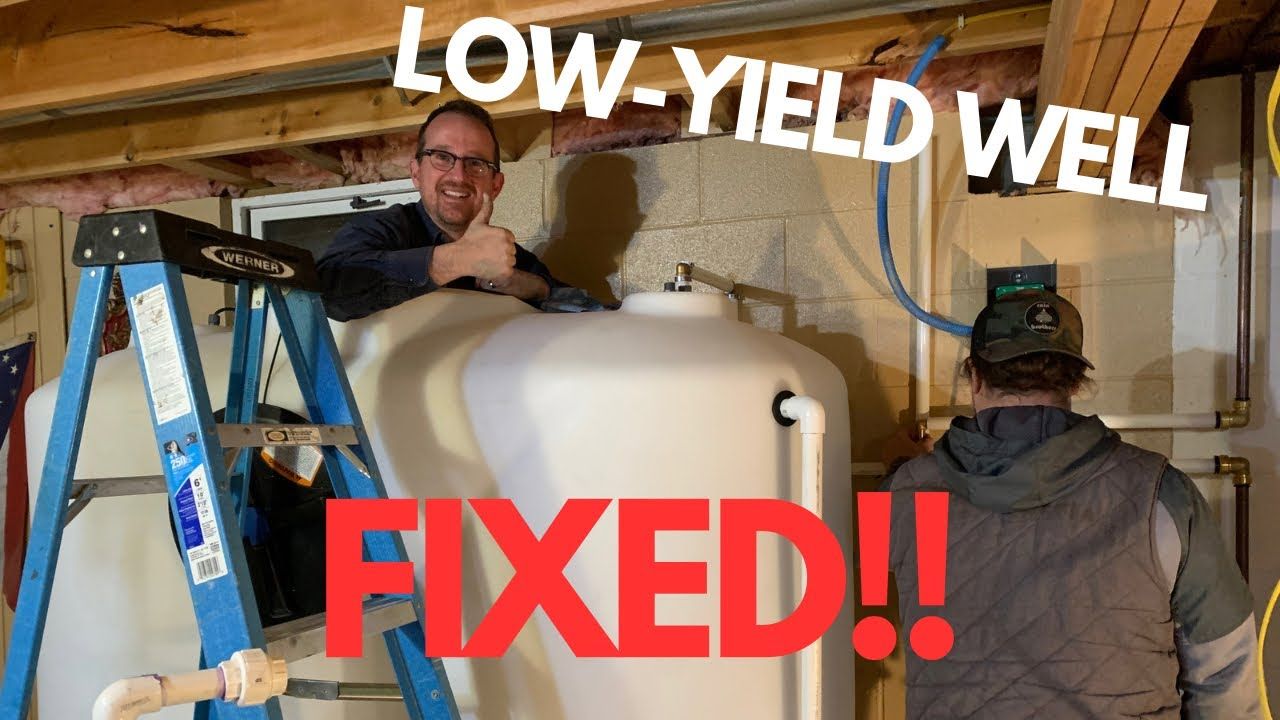How much does a rain cistern system cost to install?
Ah, yes. The question on everyone's mind: How much does a rain cistern system cost to install?
As you can imagine, the answer to that varies quite a lot. Many variables affect the end cost, some of which include:
1) Number of downspouts being picked up for harvesting
2) Dimensions of perimeter of house (which generally tells us how much pipe and trenching will be required to run drainage from downspouts to cistern)
3) Availability and price of gravel/stone (for bedding pipe, roof washer, and cistern, and for backfilling)
4) Whether extra dirt from excavation can be kept on site and spread or if it needs to be trucked away (there's a lot of extra dirt from cistern installations)
5) Is bedrock present underground? If so, how deep until bedrock is hit? In other words, can we safely dig down, say, 10 feet to set a 5500-gallon cistern without needing, oh I don't know, dynamite?
6) State regulations. Ohio is about the only state in the Midwest that has regulations on cisterns for drinking water, and they are very detailed. In Ohio, you must use a minimum 2500-gallon tank, you must have one roof washer filter per 1500 sq ft of roof space, you must use NSF Class A UV Sterilizers for continuous disinfection, etc. While these regulations are excellent standards that will leave great water quality results, the pricing does add up quickly... so a drinking water system installed in, say, Kentucky or Indiana will not be as expensive as one installed in Ohio, even though the end result will produce the same quality of water. Frustrating, I know, but think about it this way: With regulations in place, theoretically all of Ohio's cisterns produce great water quality. In Kentucky where the regulations don't exist, that is not the case.
7) Desired water pressure and flow rate inside the home
8) Desired maintenance schedule. We have components that are more cost effective but require more maintenance, and we have components that are more expensive but require less maintenance.
Because there are so many variables, it is truly difficult to answer the question, "How much would an installation cost" without first gleaning information about the project and getting answers to each of these questions. However, we can provide average costs for budgeting purposes.
Our most common installation is of a 5500-gallon underground precast concrete cistern used for whole house supply (including drinking water). Our scope of work for that generally includes:
*Pulling permit (if applicable)
*Excavating for the cistern
*Importing around 20 tons of gravel/stone
*Bedding the bottom of the cistern pit with gravel/stone and then leveling gravel/stone
*Setting 5500-gallon concrete cistern (dimensions of tank are 15' L x 8.5'W x 8'H, and dimensions of pit are usually 17'L x 10.5'W x 10'H)
*Vacuum testing the cistern to ensure it is air-tight (and, therefore, water tight)
*Excavating for drainage
*Installing schedule 40 (heavy-duty) drainage pipe from the bottom of each downspout to a pre-filtering roof washer, then to the cistern, then to an overflow
*Installing a pre-cistern roofwasher filter
*Installing a rodent/mosquito guard on the overflow
*Installing a water line from the cistern to the house
*Core drilling through a basement wall to run water line
*Installing submersible pump inside cistern
*Installing tank gauge on top of cistern
*Installing pump controls inside house (power supply from electrical panel to pressure tank must be provided by licensed electrician and is not in our scope of work)
*Installing two-stage sediment reduction filtration, down to 5 micron
*Installing UV sterilization unit (at 40mJ/cm2 dosage @ 10GPM) with isolation valves
*Installing sample tap (if applicable)
*Obtaining inspection (if applicable)
*Backfilling and grading
For a turn-key system like that, it takes our crew of 2-3 people an average of 3 days to install, and usually those are long days (7AM-7PM, at times). Average cost of a system of this size is between $17,000-$21,000. Generally, a rain cistern system costs more to install than it does to drill a well, though there are inherent risks with well drilling that aren't there with rain cisterns. In fact, we've had several customers who tried drilling at least once but sometimes up to three times on their property to see if they could hit water, only to find that no water was present, and then wound up putting in a cistern.
Sometimes we hear from our customers that they get "sticker shock" when they see that price range. And we agree, it's a lot of money, and we try our best to keep our prices down as much as possible while installing a quality system. But if there's a contractor who tells you they can do it for less, chances are very good that: 1) They've never done a rain cistern install before; 2) They are using cheap products that will not last (usually, the place where they skimp the most is in the most important piece... the tank itself!); and 3) You'll be calling us a few months after they get "done."
Please also remember that we are here to help if you decide to install your own cistern. If you purchase products from us, we will guide you through every aspect of the install. We are always committed to helping design a system around someone's budget, so please contact us to see how we can help.
